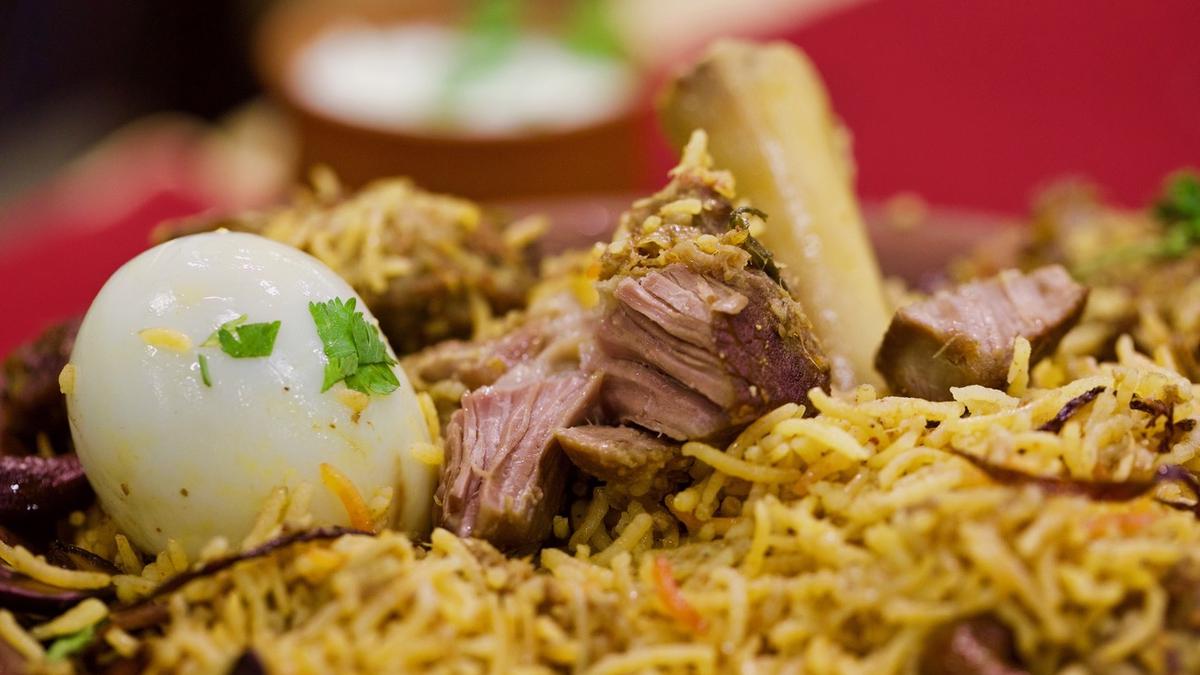
What is special about the Travancore biryani? Follow the trail
The Hindu
Long grained biriyani popular in southern Kerala is intertwined with the story of Travancore
Golden yellow mutton biryani, made with long-grained fragrant rice, lightly spiced with cloves, cinnamon, bay leaves, ginger, garlic and more, rich with pieces of tender mutton cooked just right, and garnished with fried cashew nuts, plump raisins, coriander and mint leaves, is a perennial favourite of residents in Thiruvananthapuram. Right in the middle of the biryani would be a boiled egg.
Served with a not-too-sour raita of finely sliced onion, tomato and green chilli, coconut chutney, lime pickle or date pickle and lots of pappadam, the aromatic biryani, cooked with generous dollops of ghee or coconut oil, would disappear in minutes. This was the biryani that used to be served in most upmarket and small restaurants, and eateries in erstwhile Travancore, which included places such as Nagercoil, Thiruvananthapuram, Kollam Alappuzha, and Kottayam. The culinary tradition continued even after Trivandrum became Thiruvananthapuram.
So, for many who grew up in Thiruvananthapuram before the noughties, this was the aromatic biryani that whetted their appetite for more biryani. Over the last decade, there has been a profusion of restaurants serving versions of Thalassery and Malabar biryani cooked with small-grained kaima rice or jeerakashala rice. Well-known restaurants and popular eateries in Thiruvananthapuram switched to this rice for biryani. And the dish was no longer the same for gourmets.
Many caterers and chefs abandoned the flavourful grains of Basmati for the small-grained rice at weddings and functions. Suffice to say that there were many who hankered for the taste of the ‘real biryani’, which was brought to Thiruvananthapuram mainly by Dakhani Urdu-speaking Muslims who came to serve in the cavalry of the Travancore army, the administration and the judiciary. They settled in the city and many residents were first introduced to this version of the biryani.
Many of them came from places in Tamil Nadu and Hyderabad and settled at different places in Travancore. Chand Begum, whose ancestor Murtaza Khan Saab came to Travancore during the reign of Marthanda Varma, says even today they cook biryani with Basmati.
“My amma used to cook it in the open on a firewood stove. The mutton and the rice were cooked separately and when they were three-fourths done, the rice, usually Basmati, was put into the vessel with the mutton. Then the fire in the stove would be reduced and coals would be kept on a lid used for covering the vessel in which the biryani was being cooked. It was all a matter of timing.”
One of the few restaurants that still serve the biryani made with long-grained rice is the 83-year-old Azad Hotel in the city. It was established by MP Azad, a trader, in 1940. It was perhaps the first to serve non-vegetarian food in Thiruvananthapuram and their mutton biriyani became the gold standard on to compare other biryani.











